Shuffle And Swing Review

A review copy of Shuffle and Swing was kindly provided by Bitewing Games. Thoughts & opinions are my own.
When I previously took a look at Rats of Wistar (you can read that review here) I thought that would be the last rodent-themed Euro game I’d play for a while. I was wrong. Shuffle and Swing puts you in the roles of inspector mice and worker cats working in a factory (a fabulous factory, no less), building musical instruments for humans. It’s likely this game flew under your radar, but it’s one you should seek out. It’s an interactive, area majority, rondel-powered game with beautiful artwork and a pleasingly simple ruleset.
I fought the lore and the lore won
For a cutesy game, there’s a surprising amount of backstory. The titular Shuffle and Swing are mice that met over thirty years ago while dancing to jazz. They founded a factory to build musical instruments for humans so that jazz music might live forever, and the factory even has a name: the “Fabulous Factory of Marvelous Musical Gadgets for Giants”. This amount of lore genuinely took me aback, because when I first played the game, I remember thinking that pretty much any theme could have been slapped on top of the bare mechanisms. I didn’t read the backstory until I really pored over the rulebook after that first play.
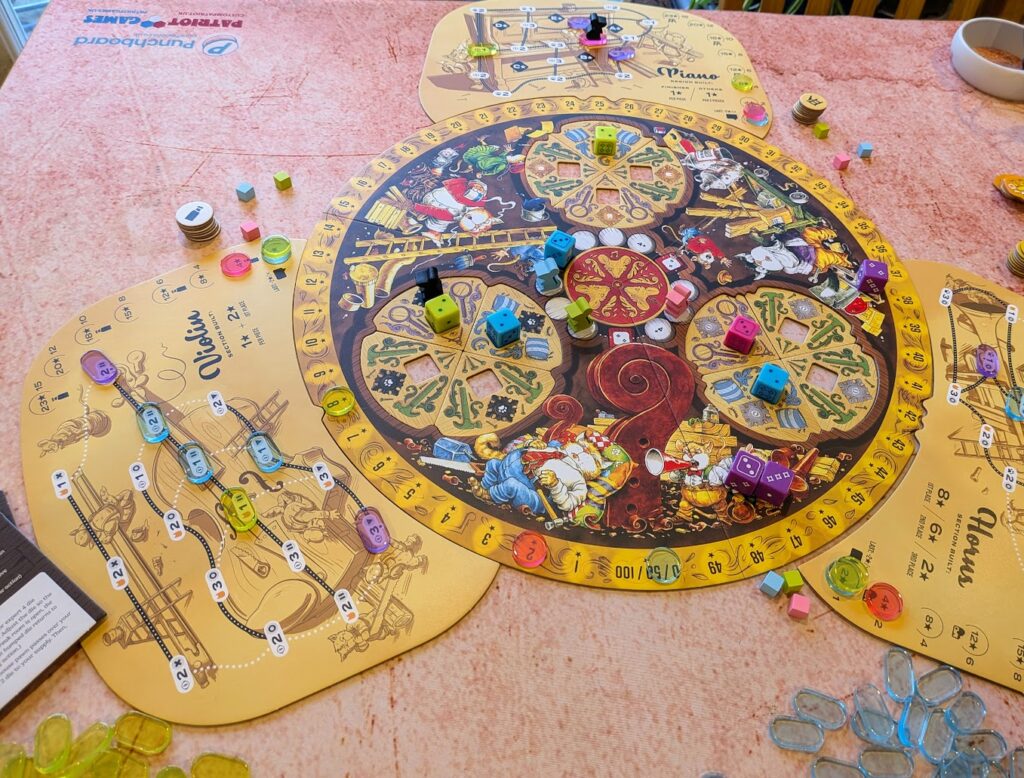
It’s always nice when a designer applies this level of care and attention to their creations. I don’t know anything about the designer – Robert Hovakimyan – but I’m willing to bet that music, especially jazz, is pretty important to him. It’s present everywhere, even going as far as recommending which jazz albums you should listen to in the rulebook.
Despite the amount of love being hugged into the game, when you play Shuffle and Swing, the theme evaporates like water on a hot pavement. It’s not to say that it doesn’t matter, just that you don’t really think about the game in the context of building musical instruments. The meat of the game comes from the area majority battle and finding the most efficient way of doing it, while denying your opponents at the same time. I don’t think this is an inherently negative thing, just realise that if you want to feel like you’re cats and mice making instruments, you’re going to have to actively work at breathing life into the narrative.
Lindy hopping
The core of the game revolves (pardon the pun) around the rondel in the middle of the board. It’s a pretty loose rondel in terms of how it’s used, as you can move in either direction around it, and as many spaces as you want to. Each third of the board has a big musical instrument board adjacent to it, and each board is double-sided with different instruments on each side, each with its own scoring rules.
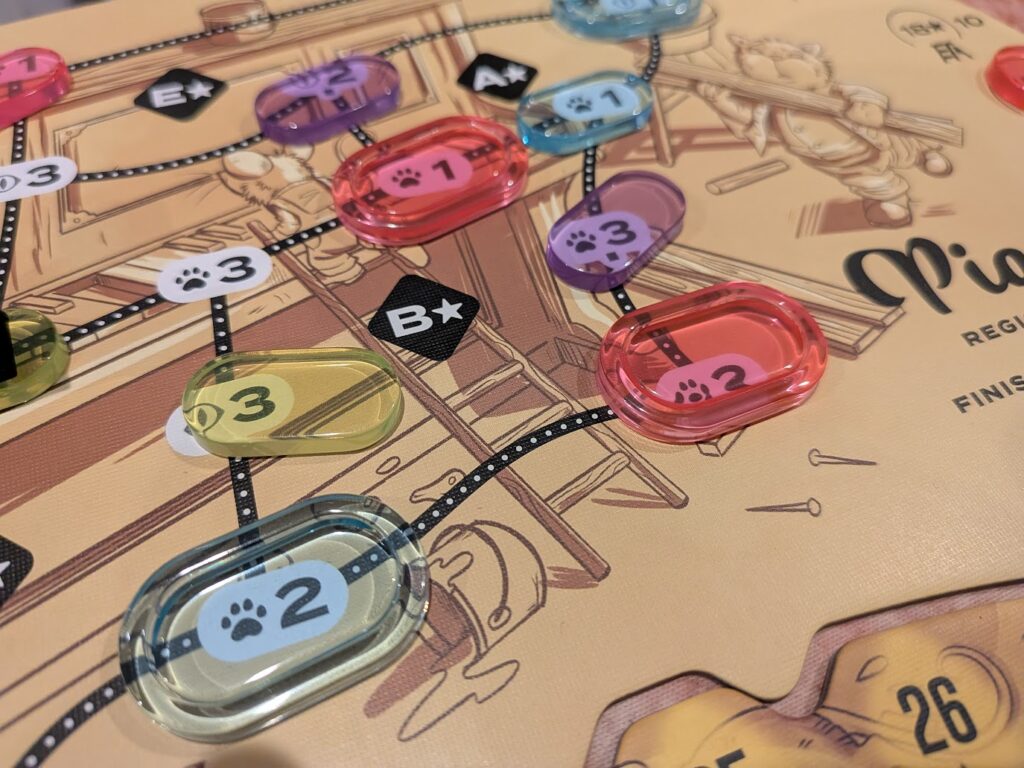
Each third of the board also has four sockets in the action area where players place their ‘supervisor mice’ dice. On your turn you move your pawn around the rondel to a new space, choose or place a die in the actions area, and take the associated action. Then the die gets bumped up a level and put back in the next open space. Interestingly, and one of the things which makes the game easy to teach and to play, the actions in each area are identical. The only difference comes from the game setup when four quadrant tiles (where the dice get placed) are placed randomly in the four slots.
Shuffle and Swing is essentially three near-identical mini-games carried out on one board. There are only two main actions in the whole game, with a third refresh action to manage too. Normally, though, you’ll either be constructing or inspecting. Each time you place or move a die, you get a cat worker token of a certain colour, which you can then exhaust to construct these transparent acrylic tiles on each instrument, trying to claim spots to gain area majority. You can also upgrade a previously built tile by adding a little hoop around it, thereby doubling its value when it comes to counting.
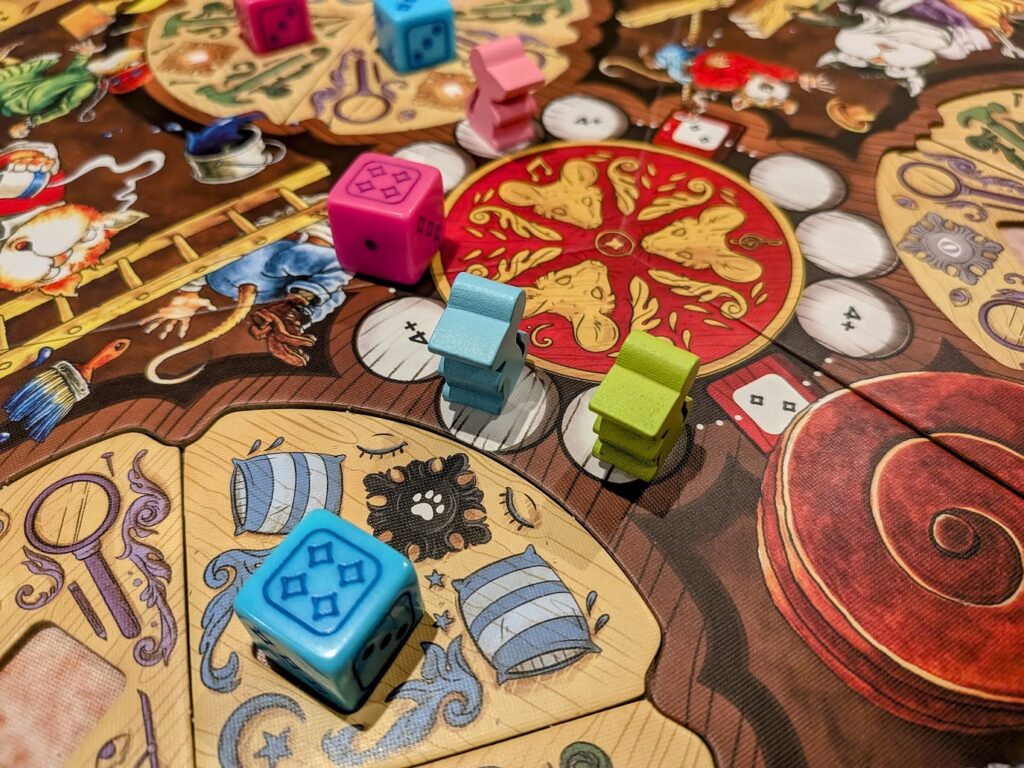
Inspecting is a pretty cool mechanism which can really reward clever play. Inspecting lets you move an instrument’s black inspector mouse around paths on the instrument board, scoring points for the owners of any built tiles along the way. Clever placement of your tiles, combined with canny use of the inspector, can really bump your points as the game progresses. I dunked on the refresh action, but in fairness, it’s pretty clever too. Your worker tokens go on a little player board in rows and columns, and using a die with a certain value lets you refresh workers on the corresponding rows and columns, allowing you to use them to construct parts of instruments again.
Final thoughts
Shuffle and Swing surprised me in the nicest way. I hadn’t heard of the game or the designer before, but the prospect of a game with a rondel is just too intriguing for me. I’m like a moth to a flame. The game is so simple in many ways – we’re talking about two main actions in the entire game – that it sounds like it ought to be as dull as dishwater. Instead, it’s testimony to Robert’s design that a game with a simple set of rules is so engaging and enjoyable. Even though it’s essentially three near-identical mini-games being played at the same time, the interconnection is enough. The colours of worker cats you need to construct on one part of the board are only available from the other two sections.
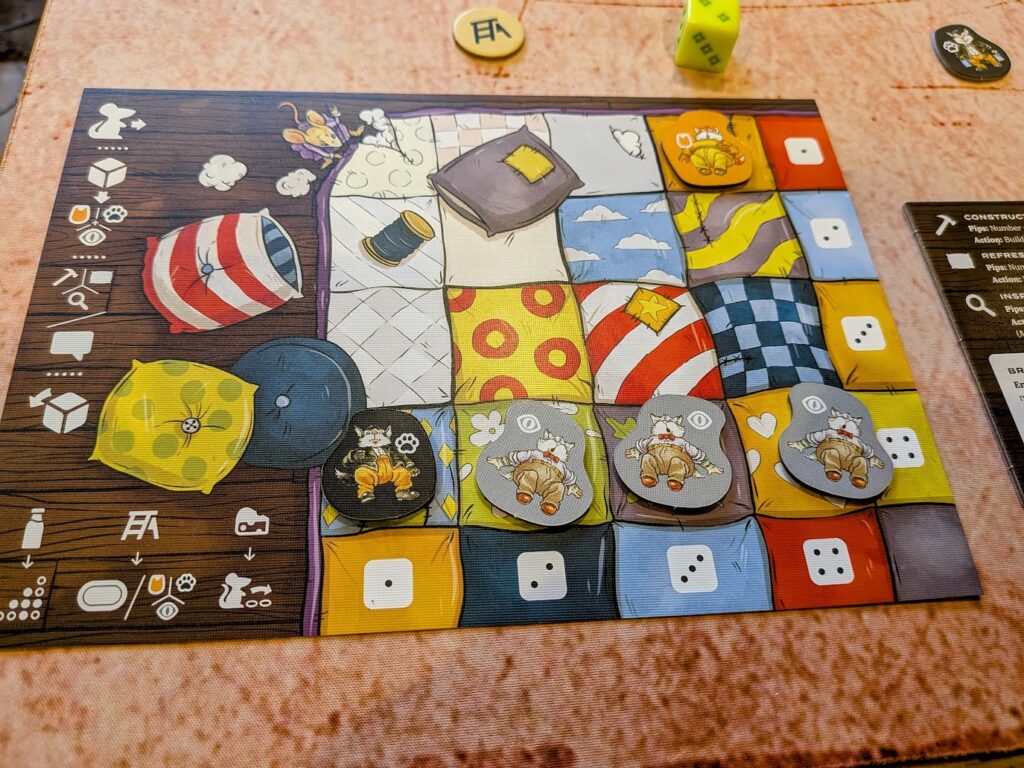
The simplicity belies its strategic depth, and while we’re not talking about a game as deep and complex as something like Civolution, there’s still plenty to chew over. I want to mention the production of the game too, as this is a beautiful thing. The transparent acrylic pieces are incredibly tactile. The jigsaw puzzle of putting the board together before the game feels really nice, and I love something as simple as having a socket to place a die in, instead of putting it on top of the board. Little things like this elevate the game above other games in the £40ish bracket. The artwork is bright, vibrant and full of life. I like it best with three and four players, as the competition from the dummy player when there’s only two of you just strips some of the soul from the game. This is a game where a lot of the fun comes from bouncing off the interactions around the table.
If you’re someone looking for a hidden gem or want something a bit different to add to your collection or your regular group’s collective library, Shuffle and Swing is a great choice. It’s quick and easy to teach and to play, and the interaction that comes from racing to claim the most lucrative spaces on each instrument is great. The agony of bumping a die back to another player once it reaches a certain level is palpable, and this is all from a game which will take you an hour and a half from start to finish. Shuffle and Swing is a colourful dollop of jazz rondel fun which just about everyone will enjoy.
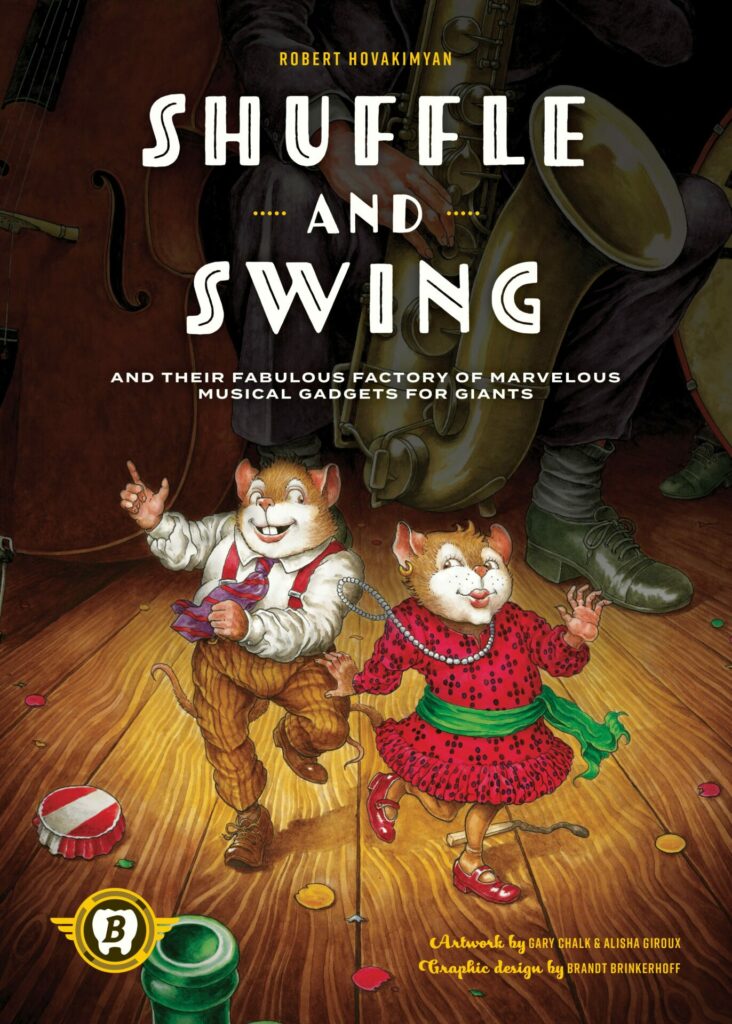
Shuffle and Swing (2024)
Design: Robert Hovakimyan
Publisher: Bitewing Games
Art: A. Giroux, Gary Chalk
Players: 2-4
Playing time: 45-90 mins













